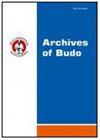在广泛理解的健康促进概念中应用非仪器和准仪器测试——灵活性测量和评估的一个例子
IF 1.5
3区 医学
Q3 SPORT SCIENCES
引用次数: 35
摘要
本文的主要目的是将测试应用于无数经验系统的例证,这些系统可以由个体研究人员、物理治疗师或健康相关培训师创建。该研究旨在回答基于安全坠落和避免碰撞练习的健康相关训练是否能显著提高年轻男性的灵活性。材料/方法:作者的非器械柔韧性试验。灵活性的评估是基于原始结果,这是解释一般(6级量表),相对准确(10级量表),并计算精度为0.1的原始结果率。对5名年龄在20岁至23岁之间的年轻男性进行了65分钟和91分钟训练前后的测量。结果:60%的病例有显著改善(0.6至1.9之间)。在训练前显示出非常高水平柔韧性的参与者,并没有倾向于刺激增强他们的柔韧性,即使从生理学的角度来看,这些指标证明了生物体的高度刺激。两名参与者的努力都以高强度(76%和78% HRmax)进行。结论:所采用的试验在各种情况下均满足测量柔韧性的可靠工具的标准,方法安全,所采用的具体评估标准在专业诊断中是充分的。该测试可独立用于所有年龄段的人,包括盲人。本文章由计算机程序翻译,如有差异,请以英文原文为准。
Applying non-apparatus and quasi-apparatus tests in a widely understood concept of health promotion – an example of flexibility measurement and assessment
Background The main aim of the paper is the application of the test as an exemplification of an infinite number of empirical systems, which can be created by individual researchers, physiotherapists or health-related trainers. The study aims at providing the answer to the question whether health-related training based on the exercises of safe falling and avoiding collisions significantly improves flexibility of young men. Material/Methods: Author’s non-apparatus flexibility test. Assessment of flexibility is based on raw result, which is interpreting in general (six grade scale), relatively accurate (ten grade scale) and is calculated with an accuracy of 0.1 the raw result rate. 5 young males, aged between 20 and 23 years were measured before and after 65 and 91 minutes of training Results: The significant improvement (between 0.6 and 1.9) has been observed in 60% cases. Participants, who revealed very high and high level of flexibility before the training, have not been prone to the stimulus enhancing their flexibility, even though in physiological terms the indicators prove high stimulation of the organism. The effort of both participants has been performed with high intensity (76% and 78% HRmax). Conclusions: The applied test meets the criteria of the reliable tool for measuring flexibility in every condition, in the safe way and adopted specific assessment criteria are sufficient in the professional diagnostic. The test can be used independently by people of all ages, including blind.
求助全文
通过发布文献求助,成功后即可免费获取论文全文。
去求助
来源期刊

Archives of Budo
SPORT SCIENCES-
CiteScore
2.80
自引率
47.60%
发文量
0
审稿时长
>12 weeks
期刊介绍:
Archives of Budo is an international peer reviewed journal publishing articles on various aspects of the sports sciences covering education and research in martial arts and combat sports, and related areas like biomechanics, kinesiology, medicine, psychology, sociology, technologies of sports equipment, research in training, selection, performance, survival, and other interdisciplinary perspectives.
Archives of Budo editors endorse the principles embodied in the Helsinki Declaration and expect that all research involving humans has been performed in accordance with these principles. All human studies must have been approved by the investigator''s Institutional Review Board. A copy of the relevant documentation should be included with the manuscript. Furthermore Archives of Budo follows the ICMJE''s Recommendations for the Conduct, Reporting, Editing and Publication of Scholarly Work in Medical Journals.
Archives of Budo provides free, immediate and permanent online access to the full text of all articles distributed under the terms of the Creative Commons Attribution Non-commercial License http://creativecommons.org/licenses/by-nc/4.0), which permits use, distribution, and reproduction in any medium, provided the original work is properly cited, the use is non-commercial and is otherwise in compliance with the license.
 求助内容:
求助内容: 应助结果提醒方式:
应助结果提醒方式:


